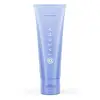What's inside
What's inside
 Key Ingredients
Key Ingredients

 Benefits
Benefits

 Concerns
Concerns

 Ingredients Side-by-side
Ingredients Side-by-side

Water
Skin ConditioningButylene Glycol
HumectantBis-PEG-18 Methyl Ether Dimethyl Silane
EmollientSodium Stearate
CleansingPentylene Glycol
Skin ConditioningGlycerin
HumectantOleth-2
EmulsifyingPhenoxyethanol
PreservativePolysorbate 20
EmulsifyingCitrullus Lanatus Fruit Extract
Skin ConditioningPyrus Malus Fruit Extract
Skin ConditioningLens Esculenta Fruit Extract
Skin ConditioningCaprylyl Glycol
EmollientSea Water
HumectantStearic Acid
CleansingHexylene Glycol
EmulsifyingSodium Lactate
BufferingLecithin
EmollientHydrolyzed Rice Protein
Skin ConditioningCarbomer
Emulsion StabilisingSodium PCA
HumectantTocopheryl Acetate
AntioxidantCitrus Aurantium Amara Flower Water
MaskingBHT
AntioxidantPotassium Sorbate
PreservativeSodium Benzoate
MaskingLepidium Sativum Sprout Extract
Skin ConditioningFragaria Vesca Fruit Extract
AstringentPalmitoyl Tetrapeptide-7
Skin ConditioningPrunus Domestica Fruit Extract
MoisturisingCichorium Intybus Root Extract
MaskingLens Esculenta Seed Extract
Skin ProtectingChlorphenesin
AntimicrobialAcacia Senegal Gum
MaskingPalmitoyl Tripeptide-1
Skin ConditioningOpuntia Ficus-Indica Stem Extract
Skin ConditioningCitric Acid
BufferingSodium Hyaluronate
HumectantEthylhexylglycerin
Skin ConditioningXanthan Gum
EmulsifyingAscorbic Acid
AntioxidantSorbic Acid
PreservativeCI 16035
Cosmetic ColorantCI 19140
Cosmetic ColorantWater, Butylene Glycol, Bis-PEG-18 Methyl Ether Dimethyl Silane, Sodium Stearate, Pentylene Glycol, Glycerin, Oleth-2, Phenoxyethanol, Polysorbate 20, Citrullus Lanatus Fruit Extract, Pyrus Malus Fruit Extract, Lens Esculenta Fruit Extract, Caprylyl Glycol, Sea Water, Stearic Acid, Hexylene Glycol, Sodium Lactate, Lecithin, Hydrolyzed Rice Protein, Carbomer, Sodium PCA, Tocopheryl Acetate, Citrus Aurantium Amara Flower Water, BHT, Potassium Sorbate, Sodium Benzoate, Lepidium Sativum Sprout Extract, Fragaria Vesca Fruit Extract, Palmitoyl Tetrapeptide-7, Prunus Domestica Fruit Extract, Cichorium Intybus Root Extract, Lens Esculenta Seed Extract, Chlorphenesin, Acacia Senegal Gum, Palmitoyl Tripeptide-1, Opuntia Ficus-Indica Stem Extract, Citric Acid, Sodium Hyaluronate, Ethylhexylglycerin, Xanthan Gum, Ascorbic Acid, Sorbic Acid, CI 16035, CI 19140
Water
Skin ConditioningMicrocrystalline Cellulose
AbsorbentPropanediol
SolventSodium Cocoyl Glutamate
CleansingGlycerin
HumectantAcrylates Copolymer
Sodium Caproyl Methyltaurate
CleansingCoco-Betaine
CleansingParfum
MaskingCamellia Sinensis Leaf
PerfumingOryza Sativa Powder
Chondrus Crispus Extract
Skin ConditioningSodium Hyaluronate
HumectantBetaphycus Gelatinum Extract
BleachingLauryl Glucoside
CleansingPotassium Hydroxide
BufferingPolyquaternium-39
Disodium EDTA
Phenoxyethanol
PreservativeEthylhexylglycerin
Skin ConditioningSodium Benzoate
MaskingSodium Carbonate
BufferingAlcohol
AntimicrobialWater, Microcrystalline Cellulose, Propanediol, Sodium Cocoyl Glutamate, Glycerin, Acrylates Copolymer, Sodium Caproyl Methyltaurate, Coco-Betaine, Parfum, Camellia Sinensis Leaf, Oryza Sativa Powder, Chondrus Crispus Extract, Sodium Hyaluronate, Betaphycus Gelatinum Extract, Lauryl Glucoside, Potassium Hydroxide, Polyquaternium-39, Disodium EDTA, Phenoxyethanol, Ethylhexylglycerin, Sodium Benzoate, Sodium Carbonate, Alcohol
 Reviews
Reviews

Ingredients Explained
These ingredients are found in both products.
Ingredients higher up in an ingredient list are typically present in a larger amount.
Ethylhexylglycerin (we can't pronounce this either) is commonly used as a preservative and skin softener. It is derived from glyceryl.
You might see Ethylhexylglycerin often paired with other preservatives such as phenoxyethanol. Ethylhexylglycerin has been found to increase the effectiveness of these other preservatives.
Glycerin is already naturally found in your skin. It helps moisturize and protect your skin.
A study from 2016 found glycerin to be more effective as a humectant than AHAs and hyaluronic acid.
As a humectant, it helps the skin stay hydrated by pulling moisture to your skin. The low molecular weight of glycerin allows it to pull moisture into the deeper layers of your skin.
Hydrated skin improves your skin barrier; Your skin barrier helps protect against irritants and bacteria.
Glycerin has also been found to have antimicrobial and antiviral properties. Due to these properties, glycerin is often used in wound and burn treatments.
In cosmetics, glycerin is usually derived from plants such as soybean or palm. However, it can also be sourced from animals, such as tallow or animal fat.
This ingredient is organic, colorless, odorless, and non-toxic.
Glycerin is the name for this ingredient in American English. British English uses Glycerol/Glycerine.
Learn more about GlycerinPhenoxyethanol is a preservative that has germicide, antimicrobial, and aromatic properties. Studies show that phenoxyethanol can prevent microbial growth. By itself, it has a scent that is similar to that of a rose.
It's often used in formulations along with Caprylyl Glycol to preserve the shelf life of products.
Sodium Benzoate is a preservative. It's used in both cosmetic and food products to inhibit the growth of mold and bacteria. It is typically produced synthetically.
Both the US FDA and EU Health Committee have approved the use of sodium benzoate. In the US, levels of 0.1% (of the total product) are allowed.
Sodium benzoate works as a preservative by inhibiting the growth of bacteria inside of cells. It prevents the cell from fermenting a type of sugar using an enzyme called phosphofructokinase.
It is the salt of benzoic acid. Foods containing sodium benzoate include soda, salad dressings, condiments, fruit juices, wines, and snack foods.
Studies for using ascorbic acid and sodium benzoate in cosmetics are lacking, especially in skincare routines with multiple steps.
We always recommend speaking with a professional, such as a dermatologist, if you have any concerns.
Learn more about Sodium BenzoateSodium Hyaluronate is hyaluronic acid's salt form. It is commonly derived from the sodium salt of hyaluronic acid.
Like hyaluronic acid, it is great at holding water and acts as a humectant. This makes it a great skin hydrating ingredient.
Sodium Hyaluronate is naturally occurring in our bodies and is mostly found in eye fluid and joints.
These are some other common types of Hyaluronic Acid:
Learn more about Sodium HyaluronateWater. It's the most common cosmetic ingredient of all. You'll usually see it at the top of ingredient lists, meaning that it makes up the largest part of the product.
So why is it so popular? Water most often acts as a solvent - this means that it helps dissolve other ingredients into the formulation.
You'll also recognize water as that liquid we all need to stay alive. If you see this, drink a glass of water. Stay hydrated!
Learn more about Water